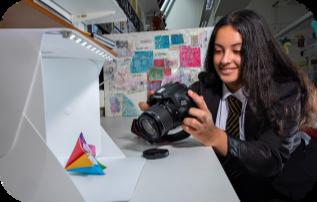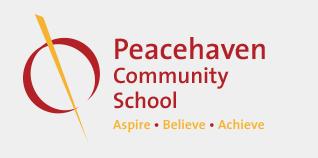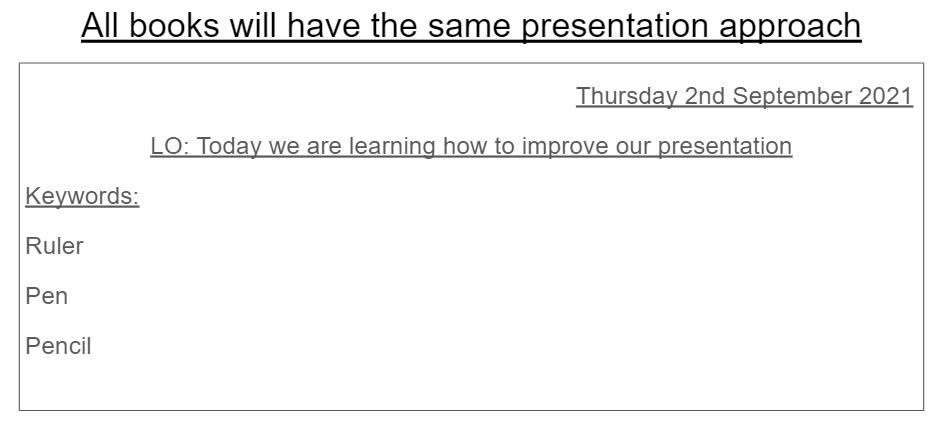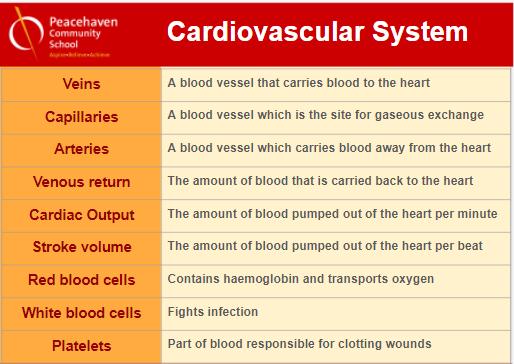Guide to Quality First Teaching at PCS 2022-23


















We believe that all children should have access to quality first teaching and learning.
We have designed a curriculum that is well sequenced and provides exciting opportunities for students to learn new skills and embed existing ones. They build on their knowledge over time and have opportunities to show their understanding.
Aspire:

● We are intent on raising aspirations for all students and equipping them with the knowledge and skills they need to be successful in school and beyond.
● We have a broad and balanced curriculum at KS3 which is mapped against the national programme of study. At KS4 we offer both academic and vocational pathways that allow all students the opportunity to achieve their full potential.
Believe:
● The curriculum sets high expectations and challenges to build students’ resilience and self-belief.
● Fundamental British Values, citizenship, and careers education is an important part of our curriculum. We provide students with many opportunities to widen their cultural understanding and take education beyond the classroom to develop students’ love of learning. This allows students to believe in themselves and their potential.
Achieve:
● Across all areas of the curriculum, we emphasise the importance of literacy, oracy, and numeracy, because we know that these are important life skills.
● Independent learning is key to our school culture and students are rewarded for their success at home as well as at school.
● Reading is actively encouraged throughout our curriculum.


Community: Improved parental engagement as an impact of effective communication and strong links between the school and the community it is part of.
Believe:
Culture: A culture for personal development and engagement where students and staff are proud to be part of the community.
Achieve:
Classroom: A sequenced curriculum is delivered with well-thought-out assessments and effective classroom practice which supports progress for all


1. Embed our PCS “House style” so all lessons are adapted to meet the individual needs of students and include highly skilled questioning. 2. Ensure our exercise books show progress over time with teacher feedback that is diagnostic and acted upon. 3. Further develop the whole school approach to literacy. 4. Create an effective independent home learning culture. 5. Embed our KS3 assessment system that reflects the national curriculum programme of study.
1. Blooms questioning stems
Seating plans 3. Photo class sheets with KS2 Prior attainment data, SEND, DA and reading ages (these are being produced for you) 4. Class ability profile (Brom-com) 5. SEND pupil passport (Edukey)
When anyone visits your lesson please show them your teaching and learning folder so they know who your key students are. These are professional working documents and so should look presentable.
● All lessons have a clear lesson objective that is linked to the national curriculum and all students regardless of their starting points or SEND needs will aim to achieve this.
● We will use success criteria as a way to support students to achieve the lesson objective.
● The outcomes are differentiated using Blooms to help support students to achieve their best.
● We will use support and challenge as our terminology to show our adaptive teaching, to ensure all students achieve the lesson objective.

● Yellow will indicate that support is in place. Students that only achieve this outcome are likely to be LPA students and therefore need adaptive approaches such as sentence starters etc.
● Blue will indicate challenge.

● Slide 1 - Lesson objective/ question and Retrieval starter
● Slide 2 - Lesson objective/ question, Keywords, and Success criteria
Last slide - Success criteria for students to assess against.
All students at PCS will achieve regardless of their starting point
1. All presentations are shared via Google Classroom with a font size that is a minimum of 14. We must use a pastel colour background, with a simple layout/visual aids.
2. Appropriate Keywords are displayed on the board and written down.
3. Physical needs are met - students are sat close to the board (Visually Impaired) and (Hearing Impaired), are away from distractions, have wiggle cushions, fiddle toys where appropriate.
4. Consistency of expectations - especially routines, work in books, and behaviour protocols.
5. We provide processing time for all students.

6. We provide clear instructions broken down into manageable chunks.
7. A First/Next steps board is used in every classroom (to support step 5).
8. We provide scaffolding for all extended writing to include sentence stems, writing frames, and placemats.

9. We provide targeted questions for SEND students.
10.We explicitly & regularly check the understanding of SEND students within the learning environment.
Appropriate keywords are displayed on the board and written down.
Support key vocabulary or concepts with visuals, as the most powerful way to support memory and understanding. A quick sketch on the whiteboard will be more useful to many students than a wordy explanation.

We provide processing time for all students.

Draw an image or refer to a visual to support the student to hold on to the question whilst processing it. Don’t be embarrassed by allowing a student some take-up time. Cue the student in then say the student's name, and that you’ll come back to them:
“I’ve got a question for you. Why does Oberon play his cruel trick on Titania? Charlie, think for a few moments and I’ll come back to you for your answer. Why does Oberon play a cruel trick on Titania?”

We provide clear instructions, broken down into manageable chunks.

A First/Next steps board is used in every classroom (to support step 5).
We provide scaffolding for all extended writing to include sentence stems, writing frames, and placemats.

I observed ___________________
The cause of ______ was _______
The pattern I noticed was___________
This reminds me of _______________

The Department for Education (Sharp et al, 2015) emphasises the importance of quality first teaching to support disadvantaged students. Quality First Teaching should include deliberate strategies that target closing the gaps for Pupil Premium students.
1. Know your Pupil Premium learners:
a. Identify them within your teaching and learning folder. b. Prioritise getting to know them e.g. their personality, interests, and academic background
2. Carefully consider your learning environment:
a. Where do your PP learners sit (highlight them on your seating plan)?
b. Who do they sit next to/near: Think carefully about where Pupil Premium learners are sitting and who they are sitting next to?
c. Use student data to identify the specific support they need to make progress
3. Pupil Premium learners respond best to a positive learning environment: plan your behaviour management strategies:
a. Meet and greet learners at the door to welcome them into the classroom b. Develop mutually respectful relationships with Pupil Premium learners.
c. Use praise and rewards for positive contributions, good work, and exceeding expectations.
4. Target Pupil Premium learners for support by:
a Approaching Pupil Premium learners first to see if they understand the task b. Target Pupil Premium learners for questioning and ask them to respond in full sentences.
c. Use Bloom’s Taxonomy to extend and stretch their answers. d. Ensure Pupil Premium learners know exactly where they are working or what are aiming for in the lesson.
e. Continually check the progress of Pupil Premium learners throughout the lesson.
f. Make sure they know their current attainment, their target attainment, and what they need to do to improve.
5. Remove barriers to learning:
a. Provide equipment and resources where necessary in the lesson. b. Provide appropriate revision and homework materials.
6 Provide feedback:

a. With a specific purpose and desired outcome. b. That is specific, accurate, and clear.
c. Followed by an opportunity for students to respond and make improvements.
7. Help PP students catch up when they miss lessons. This is especially important as PP students on average have lower attendance than their peers.
● All exercise books should have a plastic cover.
● Write the student name in full, teacher name, and subject, and then place the plastic folder over the book.
● Students MUST NOT write on this plastic cover.
● Each teacher has their own book to ensure they have ownership over content and marking.
● Ensure that assessments are sequential and stuck in to show the progress made over time. Marking grids should be printed on green paper.
● No loose pieces of work. Plan time into lessons for DIRT and general housekeeping.

● Teachers give feedback in green pen.
● Students respond to feedback in a purple pen.
● Provide students with “Next steps” to act on as part of their feedback.

All books will have the same presentation approach


The quality of students’ work in exercise books provides the best evidence for pupil progress and teacher impact over time. Teachers should challenge students to take pride in the presentation of their work.
Pupils’ exercise books will be regularly sent home and will provide key evidence in the performance management process for teachers.
We want students to show progression in their substantive and disciplinary knowledge. Pedagogy will contribute to our students’ development of their extended writing, through effective differentiation, support, and challenge.
● Students write in blue or black unless drawing or responding to feedback.
● Title, date, and learning objective (LO).
Success criteria are displayed on the board.
● Literacy marking codes will be: ○ Spelling = Sp ○
Capital letter = O ○ Paragraph = //

● Mark in green pen.
● No loose sheets in books (either stuck in or treasury tagged in).
● Books to have a plastic cover on.
Assessment (formative and summative):
● Low-stakes testing in all lessons.
● Self assessment/oral feedback AFL in all lessons.
● Evidence of the assessment in the book fits in with their learning journey.
● Response to Feedback (R2F) in purple pen.
● End of module/unit assessment (summative) data to be recorded internally.
Start - Stand at your door and welcome students into the classroom.
- Monitor corridors whilst greeting students
- Entry routine to include handing books out and looking through work/writing the date
- Ensure retrieval starters are present as students enter
- Complete register in the first 5 mins Good morning ‘Name’ answered with Good morning Ms/Sir
- Record lateness with the number of minutes specified.

- Share learning objectives and success criteria.
Lesson - Establish, maintain and repair relationships with students
- Recognise and reward positive attitude/approach towards learning (ATL).
- Recognise and reward positive behaviour.
- Celebrate excellent homework.
End - Plenary- Hinge questioning.
- Students asked to tidy away and so the room is left as it was found.
- Students stand silently behind their desks facing the front.
- Students are released on the bell, in an orderly fashion by the teacher from the door.
Corridor expectations - Maintain a presence in the corridor.s
- Challenge behaviour that does not meet expectations.
- Follow up on any issues- Log incidences on Bromcom.
- Confiscate mobile phone/ headphones if seen- we see it, we take it
- Arrive on time, every time. (3-minute changeover. Students arrive on time following break and lunch)
- Ensure phones are away
- Ensure you are in the correct uniform and have all equipment needed
- Enter quietly
- Jackets/outdoor tops removed, bags placed on the floor under the desk (or where directed by teacher)
- Get books and necessary equipment out
- Access work immediately, ask if you are unsure after you have attempted the task.
- Listen and respond to the register Good morning Ms/Sir.
- Be equipped and ready to learn
- Work to the best of your ability
- Follow and engage with instructions.
- Be polite and respectful by actively listening to others.
- Make a positive contribution to the lesson.
- To maximise learning time.
- To provide an opportunity for independent learning
- To facilitate and ensure a calm environment
- To collect data on students’ knowledge and skills
- Work until instructed to finish.
- Complete plenary tasks to the best of your ability.
- Materials tidied away and room left as found.
- Stand behind chairs in silence and wait to be dismissed.
- Leave the classroom calmly and orderly.
- Follow school systems whilst moving.
- No loitering between lessons or in corridors during social time.
- Walk calmly and sensible around the school community.
- Be considerate of others and their spaceno littering.
- No use of mobile phones/ headphones.
- Establishing and maintaining a positive relationship with students.
- To maintain a calm and engaging environment within the classroom.
- To promote and instil resilience.
- To revisit learning intentions and assess what we have learned.
- To maintain a calm and safe environment.
- To facilitate a calm transition to the next lesson/social time.
- Keeps us all safe.
- Reduces areas where bullying can occur.
- Demonstrates respect.
- Smaller/younger students can be nervous.
The Education Endowment Fund (EEF) states literacy is key to learning across all subjects in secondary school and a strong predictor of outcomes in later life.
As a result, they have provided seven recommendations:
1. Prioritise ‘disciplinary literacy’ (subject-specific literacy) across the curriculum.
2. Provide targeted vocabulary instruction in every subject.
3. Develop students’ ability to read complex academic texts.
4. Break down complex writing tasks.

5. Combine writing instruction with reading in every subject.
6. Provide opportunities for structured talk.
7. Provide high-quality literacy intervention for struggling students.
In the following pages (after the image that indicates where each literacy strategy lies within the Teaching & Learning Cycle), there has been a synthesis of the seven recommendations above into four categories. Within each category, there is general guidance followed by explicit teaching and learning strategies for your lessons. The categories are:
- Vocabulary Instruction. - Speaking & Listening. - Reading. - Writing.
A note regarding strategies
When introducing any strategy:
1. The teacher models how the strategy should be used.
2. Students reflect after their attempt on whether and why the approach was helpful (aids in creating links between the strategy and future task success).
3. Over time, gradually remove teacher support.
The EEF state:
Teachers in every subject should provide explicit vocabulary instruction to help students access and use academic language.
Effective approaches (including etymology-the way mean has changed through time and morphology-structure of words) will help students remember new words and make connections between words.
Teachers should prioritise teaching Tier 2 and 3 vocabularies, which students are unlikely to encounter in everyday speech. Teachers and subject leaders should also consider which words and phrases to teach as part of curriculum planning.
One of the strongest findings of vocabulary instruction is that multiple encounters are required before a word is really known and becomes part of the student's vocabulary repertoire.
We need to provide opportunities for students to read, write, say and listen to each of these words.
Speaking/oracy: Teacher: “Use this word in your spoken response” or “say it again but say it better/talk like an expert using this/these word(s)”.
Listening: Teacher: “during this listening task can you identify any words I used which made me sound like an expert…”

Reading: When you come across a tier 2 word in a written passage, promote a class discussion about why this word is important.
Writing: Guide students to use a specific tier 2 word within the task.
Categorise words to create vocabulary banks that students can draw upon when completing different tasks. This gives students a greater appreciation of the wealth of vocabulary options at their disposal.
In every exercise book
To be used for the most important tier 3 words in each topic. Students may use the Frayer Model to


● Develop an understanding of key concepts and vocabulary.
● Draw on prior knowledge to make connections among concepts.
● Compare attributes and examples.
● Think critically to find relationships between concepts
● Make visual connections and personal associations.

● Review key vocabulary before a test or quiz

A talking culture should:
● Appreciate talk as a valuable area of learning.
● Adapt talk to match the audience and the purpose of the task.
● Be confident to ask questions as well as answer them.
● Allow all to maturely take part in structured paired, group, and individual activities in which speaking is an essential component.
● Talk in-depth, using frameworks to help structure speech.
● Provide the opportunity for students to practice using new vocabulary.
To encourage active listening the class culture should:
● Value and respect the talk of others.
● Allow all to maturely take part in structured paired, group, and individual activities in which listening is an essential component.
● Routinely identify the main points to arise from a discussion to take appropriate notes.
● Evaluate the effectiveness of spoken contributions.
All lessons should feature:
Teachers modelling effective talk. This includes using subject-specific language and vocabulary, explicitly introducing the ways of reasoning that matter within their discipline, and how experts use metacognitive talk.
Teachers banning “I do not know”: This can be achieved through the following process:
● Ask another pupil the same question When they answer, return to the student who didn't know and ask them the question again as they now should know.
● If the second pupil you ask does not know either, give an answer yourself and return to the original student. This lets the class know that “I don't know’” is not an acceptable response and you will always demand 100% participation.

To a peer’s answer, pupils have to either… Agree with (giving reasons why) Build upon (add points), or Challenge (examine peers' response and offer an alternative). This scaffolds pupil response and promotes discussion and debate with academic language and depth.
POSE, PAUSE, POUNCE, BOUNCE
Pose the question and wait (pause), select who is going to answer (pounce), and get someone else to evaluate their peer’s answer (bounce).
Phonics= + 5 months progress
Reading comprehension strategies= + 6 months progress
Teachers should:
● Facilitate reading development through their subject and provide opportunities for reading as a class, in groups, and individually.
● Encourage reading aloud if appropriate to the task.
● Present reading tasks at a suitable level.
● Use contextual clues (e.g. indexes, glossaries, illustrations).
● Help pupils to skim, scan or read intensively according to the task.
● Support pupils to be aware of the language of reading: decoding, comprehension, location, deduction, inference, skimming, scanning, predicting, visualising, empathising, and questioning.
● Encourage pupils to discuss and reflect on their writing.
● Encourage further reading around the subject.
● Teach pupils to select or note only what is relevant.
● Help pupils to question, challenge, and recognise bias in a range of texts.
● Support pupils who are at the early stages of reading
● Teach pupils to read identified subject vocabulary.
● Set reading and research tasks as part of classwork and homework.
Each pupil is given a passage to read and analyse. In different colours, you could have them highlight:
A. The top 3 keywords (add a definition by these).
B. The most important sentence/points.
C. The best connective word.
D. The worst connective word (then provide a superior alternative).
E. The verbs/adverbs/nouns/connectives etc.
Summary tasks after completing a combination of the above could be
1. Writing what is the main point of the passage in two sentences.
2. Bullet point what more you need to know.
3. Find a synoptic link i.e. show how another area of the course links to this text.

4. Organise the data/information into a table e.g. pros/cons.
Students summarise what they have read. This can be adjusted by the length of summary required in addition to utilising success criteria.
Readers are paired (high/low) and read from the whole class text whilst alternating turns. One partner listens while the other reads. The listener is there to give feedback to the reader. To maximise this strategy's effectiveness you should train students on how to give feedback and what to focus on, for example, how to break a word down into sounds.
The teacher models fluent and expressive reading of a short segment of text (1-2 sentences) and then instructs students to re-read that text with the same (or similar) inflection and prosody. This works well with younger students but should not be used frequently as it can become distracting
This is where students and the teacher all read from a passage at the same time. It is effective with short passages and more so with younger students.
Students (after you model) read from the same text multiple times with the aim to improve pronunciation. The aim is for them to build fluency with tricky tier 2 and 3 words needed for future exams. ‘If you can say it, you can spell it’.
Three basic skills that any teacher can explicitly teach whenever they expect pupils to do any reading:
1. Skimming - the ability to get a broad overview of what a text is about as quickly as possible.
2. Scanning - the ability to pick out key information from a text.

3. Zooming - to be able to focus on the meanings of individual words and phrases and their relevance to a text. When reading a text, zoom in on a keyword to find out more about it e.g. dictionary, and then return to the passage.
Pupils are asked to scan the text and list the five most helpful text features that are utilised by the author(s). This strategy offers the opportunity for the teacher to reinforce the support structures, such as the glossary, which can simply go unused by weaker, less confident readers of all ages.
According to research each subject should:
● Offer pupils models for writing in a range of forms.
● Model high standards of presentation.
● Model pieces of writing.
● Provide resources to support independence.
● Help pupils to plan, draft, and redraft written work.
● Provide appropriate activities for pupils of all levels of ability.

● Draw attention to the purpose and audience of a text.
● Help pupils with handwriting, spelling, and presentational aspects of writing.
● Foster self-esteem by displaying work at all levels which represent pupils’ best efforts.
● Teach pupils to spell identified vocabulary.
A typical writing cycle will include the planning, drafting, and editing stages.
WRITING FRAMES WITH A COMMAND WORD FOCUS
Identify the demands each specific command word has. Tasks can then be scaffolded to aid the development of pupils’ ability to respond appropriately to each specific command word.
Writing frames are an example of supporting questions that are marked based on bands. This support can gradually be removed over time.

(see vocab section)
For an extended writing task provide a model paragraph linked to the task. Tell pupils this is a grade 8/9 response, so you demystify their sense of what top grades look like. This includes sophisticated vocabulary, keywords, explained definitions, points, and examples. Break down this paragraph with pupils and have them highlight key aspects in different colours and then use this as a scaffold for their response.
For short tasks provide sentence stems and ask pupils to complete these. By finishing the stem with words such as ‘because’ will make the pupil explain.
Recommendations from the EEF are:
1. Consider how technology will improve teaching and learning before introducing it.
a. Define a learning need first.
b. Be clear on the rationale for how technology will improve learning. c. Consider whether technology will supplement, enhance or replace existing teaching.
d. Prepare for implementation e.g. have everything you need (equipment, time, opportunity).

2. Technology can be used to improve the quality of explanation and modelling. a. Explanation and modelling are elements of effective teaching.
3. Technology offers ways to improve the impact of pupil practice.
a. Practice matters, ensure there is adequate time for pupil practice with the technology.
b. Increased opportunity for spaced practice.

4. Technology can play a role in improving assessment and feedback. a. Technology can provide feedback to pupils = immediate feedback + less burden on teachers e.g. interactive quizzes.
Low stakes quizzing Roediger, Putman, and Smith (2011) outline 10 benefits of regular testing: 1. Aids retention 2. Identifies gaps in knowledge 3. Produces better organisation of knowledge 4. Improves metacognitive monitoring 5. Improves transfer of knowledge to new contexts 6. Provides feedback to teachers
7. Frequent testing encourages students to study 8. Causes students to learn more 9. Can facilitate retrieval of information 10.Prevents interference when learning new material that was not tested
Digital platforms to support this that do not require devices for students: Plickers, Quickkey
Digital platforms to support this that require devices for students: Kahoot, Socrative, Quizziz, Blooket
Homework develops important study skills from time management and organisation to self-motivation and independent learning. Homework is at its most effective when it allows students to revise what they’ve learnt in class. Tasks that revisit what’s been taught during lessons reinforce learned knowledge and increase the likelihood of students remembering more
Tasks that students complete should allow teachers to identify whether students understand the curriculum and for them to identify gaps in comprehension, allowing them to adapt lessons accordingly It is imperative that we use digital resources to help students to practice what they have been taught at home and get timely feedback

Homework has a positive impact on average (+5 months), particularly with students in secondary school. Studies involving digital technology typically have a greater impact (+6 months). Schools need to consider how home learning can be supported (e.g. by providing homework clubs). Homework that is linked to learning in the classroom and includes feedback has a higher impact on learning The quality of the task set appears to be more important than the quantity of work required from them.
Homework should be set weekly for Core Subjects and fortnightly for Option Subjects. Homework tasks should take no longer than 45 mins to complete There should be an emphasis on quality rather than quantity

● Set questions/ quizzes using digital resources - GCSE Pod, Educake, Seneca, MyMaths, Maths Watch, or Google form quizzes.
● Exam practice questions (These will be marked and students will have the opportunity to improve their response).
● Mind maps or flash cards.
Homework should be set weekly for Maths, English, and Science and fortnightly for Humanities and MFL. Other subjects as appropriate. Homework tasks should take no longer than 30 mins to complete. There should be an emphasis on quality rather than quantity. A timetable of when the homework will be set and due in, will be supplied to students and parents
● Set questions/quizzes using digital resources.
● Set homework that explicitly involves reading and comprehension that consolidates previous learning.
One of the ideas stemming from Cognitive Load Theory is that novices learn more successfully from studying a series of complete worked examples of problems or tasks than they do if asked to problem solve independently. This is because the cognitive load is reduced if we learn the overall method separately from trying to apply it to a particular question. Once we know the method, it is easier to apply it successfully. Teachers should make sure they're providing enough worked examples. The backward fading technique provides a good model for moving from guided to independent practice through worked examples.
Introduce the first example of a question that you are aiming for students to answer. With their attention secured, go through the problem on the board, produce a model answer, talking through what you are doing as you write. It is often better to model it live than to produce a pre-prepared example. With the answer in view, talk through each of your steps again and check for student understanding of each one. "What did I do here?" "Why did I choose to write that phrase?"
Repeat the process with another example, taking care to draw out how it is similar to the first example and the ways it is different. The similarities should serve to reinforce the general idea or method you are teaching. The differences should illustrate how the method works with different cases (numbers, words, phrases, and examples). Be sure to narrate your thinking and then check for understanding. “How is this example the same/different from the previous example?”
Introduce a question and begin to answer it, perhaps doing the first couple of lines of a maths problem or providing some of the ideas in a written response, following the pattern or procedure you introduced in the first two examples. Give students time to complete the question and then check for answers, misconceptions, and errors.

Students should now be ready for a practice phase. Initially, set one or more questions, of the same type as the examples, giving information so that they are cued i.e. where you have started them off or signalled the way to begin.
When ready, set one or more questions of the same type that you have modelled where students have to undertake the whole thinking process independently. Stress the need to follow the details of the modelled examples. Follow-up with self-assessment. Check for accuracy, including process questions to verify that the methods are understood as well as being copied. You may need to include a range of questions of varying difficulty for independent completion to be successful and challenging for all learners.
Questioning is one of the key elements of AfL identified by Black and Wiliam (1998) and according to Ofsted (1996), “the single most important factor in students’ achievements of high standards” when it is used effectively. Questioning can be used at any point within a lesson to help a teacher monitor progress of a class. However, if questioning is used without careful consideration it can be detrimental to the whole class.
Black and Wiliam (1998) identify the main problems in questioning as teachers not giving students an appropriate amount of time to answer the questions they are being asked; the use of too many questions that require little more than the recall of specific facts; the majority of students not engaging with the question and assuming that they will not be required to respond. Our vision for questioning at PCS is to ensure that all teachers use well-planned and structured questions, that students have appropriate time to “think hard” about their responses, that all students are expected to be able to respond, and that SEND/PP students are targeted often.
Teachers should be planning questions before the lesson, as part of our adaptive teaching approach. All questions should be planned with prior attainment of the student taken into account. The use of Blooms can be used to support this.
Type of questions:
1. Open questions, e g What do you think about ?
2 Higher order questions, e g What can you infer ?
3. Hinge questions, e.g. diagnostic questions asked at the point in the lesson called the 'hinge' where you need to check if your students are ready to move on.
All students must engage with the question before a student is targeted by calling their name. The majority of questions are targeted rather than “hands up”. Students should be chosen by:
1. Using the annotated seating plan in the T&L folder to choose a child.
2. SEND/PP students should be targeted twice as often.
3 Every student should be expected to answer a question during a lesson
All students must give a response to a question and teachers should give support to enable students to answer. Rephrase the question to support the student to answer.
Come back to the student with the question again
All students should respond to questions using either:
Think - Pair - Share.
Use of mini whiteboards (ensure all misconceptions are addressed before moving on).

“Every teacher needs to improve, not because they are not good enough, but because they can be even better.” Dylan Wiliam
CPD Priorities 2022/23
The following outlines our current CPD priorities for this academic year and reflect our School Improvement Plan for teaching and learning.
Teaching and Learning Priorities: Developing teaching and learning across our three teaching and learning priorities:
● Books
● Literacy - Reading, Writing, and Oracy.
● Adaptive teaching.
In 2022/23 INSET time is divided into 6 one-hour CPD sessions and 13 T&L briefings. Departmental training time is calendared regularly to develop CPD priorities CPD at PCS has three strands: School-based CPD, Individual CPD, and Subject-specific CPD. The aim of CPD at PCS is to allow staff to develop their skills based on their interests and needs. CPD opportunities will be bespoke and targeted based on the findings from quality assurance, staff feedback, and self-reflection.
This focuses on T&L priorities for 2022-2023: Books, literacy, and adaptive teaching. This type of CPD will be developmental, not judgemental. It will be based on an instructional coaching model and directed practice. Based on observations from learning walks, book scrutiny, and student voice staff will practise delivering parts of their lesson that SLT identifies to be developed. During this practice, staff will be given a script to ensure common language and approaches are used and will be coached on their practice to ensure effective delivery in classrooms
This will be specific to individual interests and needs and will allow staff to progress in their career development. Each member of staff will be given a coach who will observe them teach and provide them targets to improve their practice CPD needs will be linked to performance management targets and reviews CPD will be provided through internal and external expert support and challenge.
External support/challenge is sought from NPQs. Staff have access to external training where this meets an identified need and/or school priority. Developing leadership through the PiXL leadership programme for middle leaders Support is given to staff completing professional qualifications such as NPQs. Subject leadership courses/training is also supported. CPD will also be supported through departmental meetings, coaching and mentoring, and responding to individual needs.
Staff are expected to attend Swale network meetings and are offered the opportunity to visit schools in the trust CL will also attend examiner report sessions run by exam boards The school aims to have at least one member of staff trained as an exam marker to help ensure GCSE courses are being taught effectively. Staff will report back to their department about any training they have attended to ensure that information is disseminated across the department. CL will use the departmental time to develop their departments’ teaching practice.
